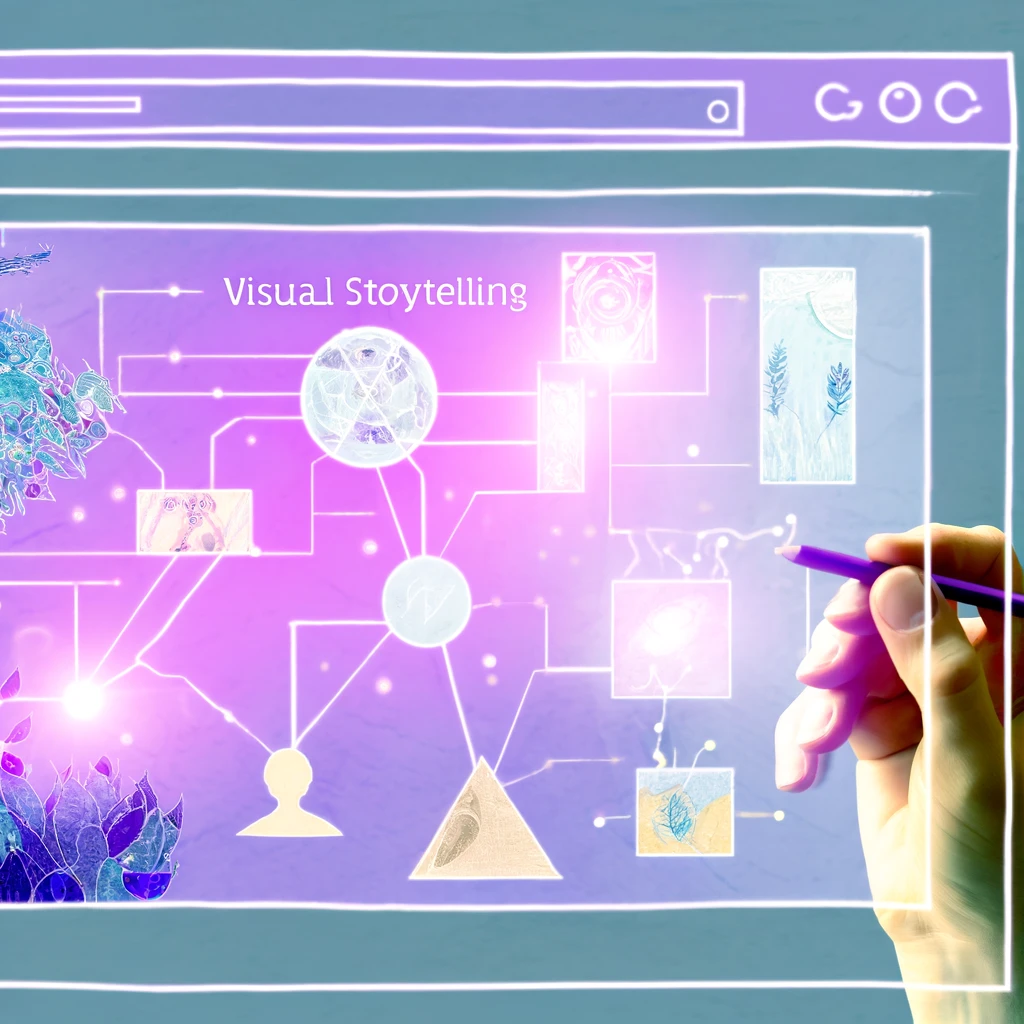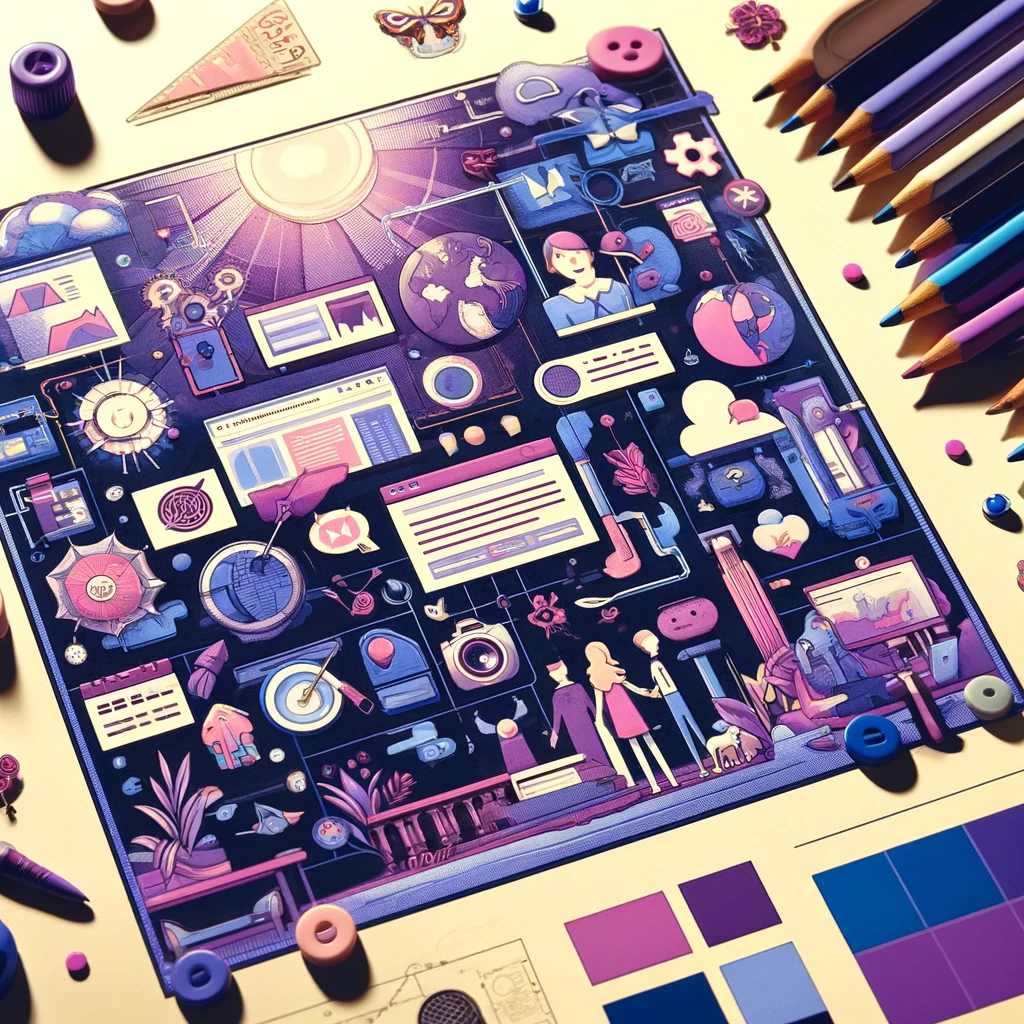
Visual Storytelling: Enhancing Online Presence for Drug Rehab Websites
Table of Contents
Drug Rehab Visual Storytelling
Introduction
In the digital landscape where first impressions are crucial, the role of visual imagery in crafting an online presence for drug rehab centers cannot be overstated. This introductory chapter lays the foundation for understanding how powerful visuals can transform the way drug rehab services are perceived online, ultimately influencing the decision-making process of potential clients. Through strategic use of visual storytelling, rehab centers can create a more engaging, empathetic, and user-friendly online environment.
Key Insights
- Immediate Impact: Visuals grab attention faster than text, making them a critical tool in engaging visitors as soon as they land on your website.
- Emotional Connection: Images, videos, and infographics can evoke emotions, helping to build a sense of trust and understanding between rehab centers and their potential clients.
- Simplifying Complex Information: Visuals can break down complex treatment processes into understandable and relatable content, making the decision process easier for individuals seeking help.
- Enhancing Brand Identity: Consistent use of visual elements strengthens your brand’s identity, making your rehab center more memorable and recognizable.
- Improving User Experience: A well-designed website with thoughtful visual elements can significantly enhance the user experience, encouraging longer visits and deeper engagement.
The inclusion of visual storytelling in the design and optimization of a drug rehab website is not merely about aesthetics; it’s about effectively communicating your center's mission, values, and services in a way that resonates with those in need. By focusing on visual imagery, rehab centers can bridge the gap between offering help and connecting with individuals on a personal level.
Visual storytelling emerges as a potent strategy in enhancing online presence for drug rehab websites. Its ability to engage, inform, and inspire not only elevates a brand but also extends a beacon of hope to those in need.
Why Visual Storytelling Matters
Visual storytelling stands as a powerful conduit for emotional connection and engagement within drug rehab websites. This approach transcends traditional text-based content, tapping into the visceral, more instinctive parts of our psyche to foster a deeper understanding and empathy between rehab centers and their audiences.
Understanding the Emotional Impact of Visuals
- Immediate Resonance: Visuals, whether images, videos, or infographics, have the unique ability to evoke emotions instantly, creating an immediate sense of connection and understanding.
- Memory Retention: Content paired with meaningful visuals is more likely to be remembered, reinforcing your message and brand in the visitor's mind.
- Empathy Creation: Through visuals, stories of recovery and hope are shared, fostering a sense of empathy and making the journey to recovery feel more accessible.
Utilizing Visuals for Storytelling and Connection
- Showcasing Success: Success stories and testimonials visualized through compelling imagery or video testimonials can inspire and motivate.
- Explaining Processes: Using infographics and visual aids to demystify treatment processes helps in setting realistic expectations and reducing anxiety.
- Building Trust: Professional and high-quality visuals reflect the credibility and trustworthiness of your rehab center.
The strategic use of visual storytelling within drug rehab websites can dramatically enhance online presence, inviting more profound engagement and connection with potential clients. By effectively employing visuals, rehab centers can not only inform but also inspire and comfort those seeking help, making the first step towards recovery less daunting.

Techniques of Visual Storytelling for Drug Rehab Websites
In the realm of drug rehab website design, the power of visual storytelling cannot be underestimated. It serves as a bridge between the rehab centers and individuals seeking help, transforming the digital space into a canvas of hope, understanding, and empathy. This chapter delves into effective techniques for leveraging visual storytelling, specifically focusing on the use of images, videos, and infographics to enhance the online presence of drug rehab websites.
Techniques of Visual Storytelling for Drug Rehab Websites
- Patient Success Stories Through Images and Videos: Capturing and sharing patient success stories through images and videos can profoundly impact viewers. These visuals should be genuine, focusing on the journey of recovery to inspire and motivate those considering rehab.
- Explaining Treatment Processes with Infographics: Infographics are an excellent tool for breaking down complex treatment processes into digestible, easy-to-understand visuals. They can illustrate the steps of recovery, benefits of various treatments, and what patients can expect, thereby demystifying the process and reducing anxiety.
- Creating a Visual Brand Identity: Consistent use of colors, fonts, and imagery helps in building a recognizable brand identity. This visual consistency across the website reassures visitors of professionalism and trustworthiness.
- Showcasing Facilities and Services: High-quality images and virtual tours of the facilities give potential clients a sense of the environment, making the decision to reach out feel more informed and comfortable.
- Interactive Visual Elements: Incorporating interactive elements like clickable infographics or short, informative animations can increase engagement and time spent on the site, contributing to a deeper understanding of the services offered.
By implementing these visual storytelling techniques, drug rehab websites can create a more engaging and informative online presence. This not only aids in conveying the center's message and values but also plays a critical role in converting visitors into clients by providing a glimpse into the journey of recovery.

Improving User Experience with Visuals
Enhancing the user experience with visuals on a drug rehab website is not just about making the site aesthetically pleasing. It’s about strategically using design elements to guide visitors through their journey on your site, from first glance to the final decision to seek help. This chapter outlines how to leverage visual design to improve navigation, readability, and ultimately, the functionality of your website.
Key Strategies for Enhancing User Experience with Visuals
- Intuitive Navigation Design: Use visual cues such as icons and breadcrumbs to help visitors understand where they are on your site and how to navigate to the information they need. This reduces frustration and enhances the overall user experience.
- Readability with Visuals: Employ a clean, organized layout with high-contrast fonts and background colors to make reading easier. Break up text with relevant, high-quality images to keep users engaged and to illustrate your points more vividly.
- Balancing Aesthetics and Functionality: While a beautiful design can attract visitors, functionality ensures they stay and engage. Optimize image sizes for quick loading times, and ensure your visual design supports the site's goals without overwhelming the content or the user.
- Responsive Design for All Devices: Ensure your visual design adapts seamlessly across devices. Mobile users should have just as enriching an experience as those on desktops, with visuals and text scaling appropriately.
- Using Visuals to Direct Attention: Place striking images or graphics near key calls to action. Visuals can act as directional cues, guiding the user's eye to the most important actions you want them to take.
By incorporating these visual design elements thoughtfully, drug rehab websites can significantly improve the user experience, making the path to recovery seem less daunting for visitors. This not only aids in conveying the center’s message and values effectively but also plays a crucial role in converting visitors into clients by providing an intuitive and supportive online environment.

Best Practices for Incorporating Visual Content
Integrating visual content effectively into your drug rehab website isn't just about making it more appealing; it's about using visuals strategically to communicate your message, connect with your audience, and improve your site's performance both in terms of user experience and search engine optimization (SEO). This chapter will cover best practices for choosing and optimizing visual content on your drug rehab website.
Best Practices for Incorporating Visual Content
- Selecting the Right Visuals:
- Choose images and videos that reflect the reality and empathy of the recovery journey, ensuring they align with your message and brand values.
- Use authentic visuals that represent your facility, staff, and the people you help to build trust and credibility.
- Optimizing Visual Content for Speed:
- Compress images and videos to reduce file sizes without significantly compromising quality, ensuring your site loads quickly.
- Utilize responsive images that adapt to different screen sizes and resolutions, enhancing the mobile user experience.
- Enhancing SEO with Visuals:
- Incorporate relevant keywords into the file names, alt text, and captions of your images to improve SEO.
- Use high-quality and relevant images to encourage engagement, reducing bounce rates and improving your site's SEO ranking.
- Balancing Visuals and Content:
- Ensure that visuals complement the text content, providing a balance that enhances comprehension without overwhelming the visitor.
- Use visual breaks in long text sections to keep the reader engaged and make complex information easier to digest.
- Testing and Feedback:
- Regularly review how different visual elements perform, using analytics to understand user engagement and preferences.
- Gather feedback from users and stakeholders to continuously refine and improve the visual strategy.
Effectively incorporating visual content into your drug rehab website can significantly enhance its appeal, usability, and effectiveness in communicating your mission. By following these best practices, you can create a more engaging and informative online presence that resonates with your audience.

Case Studies: Success Stories in Visual Enhancement
Visual enhancement in drug rehab website design is not just a trend; it's a transformational strategy that has proven its effectiveness time and again. This chapter dives into the success stories of drug rehab centers that have leveraged visual storytelling to significantly boost their online presence, providing actionable insights and inspiration for others looking to make a similar impact.
Success Stories in Visual Enhancement
- Enhanced User Engagement with Interactive Tours: One rehab center introduced a virtual tour feature, allowing potential clients to explore facilities from the comfort of their home. This immersive experience led to a notable increase in inquiries, demonstrating the power of interactive visuals in engaging users.
- Increased Conversion Rates Through Personalized Video Content: Another center utilized personalized video content to share patient success stories. These videos, prominently displayed on the homepage, resulted in a dramatic uplift in conversion rates, showcasing the emotional impact of personal storytelling.
- Improved SEO Rankings with Optimized Images: A rehab center focused on optimizing all visual content for SEO, incorporating keywords into image alt texts and file names. This approach improved their search engine rankings, driving more organic traffic to their site.
- Boosted Social Media Engagement with Infographics: By creating and sharing infographics summarizing treatment options and success statistics, a center significantly increased its social media engagement, drawing more visitors to their website and enhancing their online presence.
- Enhanced Brand Recognition with Consistent Visual Branding: Consistency in visual branding across all platforms helped one center strengthen its brand recognition. The use of a cohesive color scheme, logo placement, and imagery style made their brand instantly recognizable, fostering trust and credibility.
These case studies underscore the immense potential of visual storytelling in enhancing the online presence of drug rehab websites. By employing a combination of interactive tours, personalized videos, SEO-optimized images, engaging infographics, and consistent branding, rehab centers can not only attract more visitors but also deeply connect with them, ultimately guiding more individuals on the path to recovery.
Conclusion
In the landscape of digital marketing for drug rehab services, the power of visual storytelling emerges as a pivotal strategy for enhancing online presence and engagement. This concluding chapter underscores the vital role that visual imagery plays in connecting rehab centers with their target audience, offering a recap of key insights and a nudge towards embracing these strategies for improved engagement and conversion rates.
Recap of the Importance of Visual Storytelling
- Immediate Engagement: Visuals capture attention faster than text, making them essential for engaging visitors from the moment they land on your site.
- Emotional Connection: Through visual storytelling, rehab centers can evoke emotions, foster empathy, and build trust with potential clients.
- Simplified Communication: Complex information about treatments and recovery processes can be conveyed more effectively and memorably through visuals.
- Enhanced User Experience: Aesthetically pleasing, well-organized visuals improve navigation and readability, making for a more user-friendly website.
- SEO Benefits: Optimized visual content boosts your website's SEO, increasing visibility and attracting more traffic.
The journey through the digital realm is fraught with challenges, yet filled with opportunities for drug rehab centers to narrate their story compellingly. Visual storytelling is not just an option; it's a necessity in today’s visually driven online environment. It has the power to transform abstract concepts into relatable stories, complex processes into simple steps, and potential clients into engaged community members.
Encouragement to Implement Visual Strategies
The digital landscape constantly evolves, and with it, the strategies to maintain and enhance online presence must also adapt. The integration of visual storytelling into your website design and content strategy offers a promising avenue to captivate, educate, and convert your audience more effectively.
Questions You Might Ponder
How does visual imagery enhance the online presence of drug rehab centers?
Visual imagery grabs attention quickly, creating an immediate connection with viewers. High-quality images, videos, and infographics can evoke emotions, simplify complex treatment information, and strengthen brand identity, making the rehab center more memorable and engaging to potential clients.
What types of visual content are most effective for drug rehab websites?
Effective visual content for drug rehab websites includes genuine images and videos of patient success stories, infographics explaining treatment processes, and interactive elements like virtual tours. These visuals not only inform and educate but also inspire and build trust among potential clients.
How can visual storytelling foster empathy and trust in potential clients?
Visual storytelling shares real-life recovery stories and detailed insights into the treatment process, helping potential clients see the possible outcomes of seeking help. By visually representing the journey of recovery, rehab centers can foster a sense of empathy and trust, making the first step towards recovery feel more accessible.
Why is optimizing visual content for SEO important?
Optimizing visual content for SEO, such as using relevant keywords in image alt texts and ensuring visuals are mobile-friendly, improves a website's search engine rankings. This not only increases the site's visibility but also attracts more traffic, enhancing the rehab center's online presence and potential client engagement.
How do interactive visual elements contribute to user engagement on rehab websites?
Interactive visual elements like clickable infographics or virtual tours engage users more deeply by providing them with a hands-on, immersive experience. These elements encourage users to spend more time on the site, exploring the facilities and services offered, which can lead to a higher rate of inquiries and admissions.
What role does consistent visual branding play in enhancing a rehab center's online identity?
Consistent visual branding across all platforms reinforces the rehab center's identity, making it easily recognizable. This consistency in colors, fonts, and imagery styles builds professional credibility and trust, essential for attracting and retaining clients in a competitive digital landscape.
How can rehab centers measure the success of their visual content strategy?
Rehab centers can measure the success of their visual content strategy through website analytics, tracking engagement metrics like page views, time spent on the site, and conversion rates. Feedback from users and the performance of specific visual elements in A/B testing can also provide valuable insights for future strategy adjustments.
Looking to transform your online presence with visual storytelling? Let's collaborate to unlock the full potential of visuals in narrating your rehab center's journey to recovery and success.